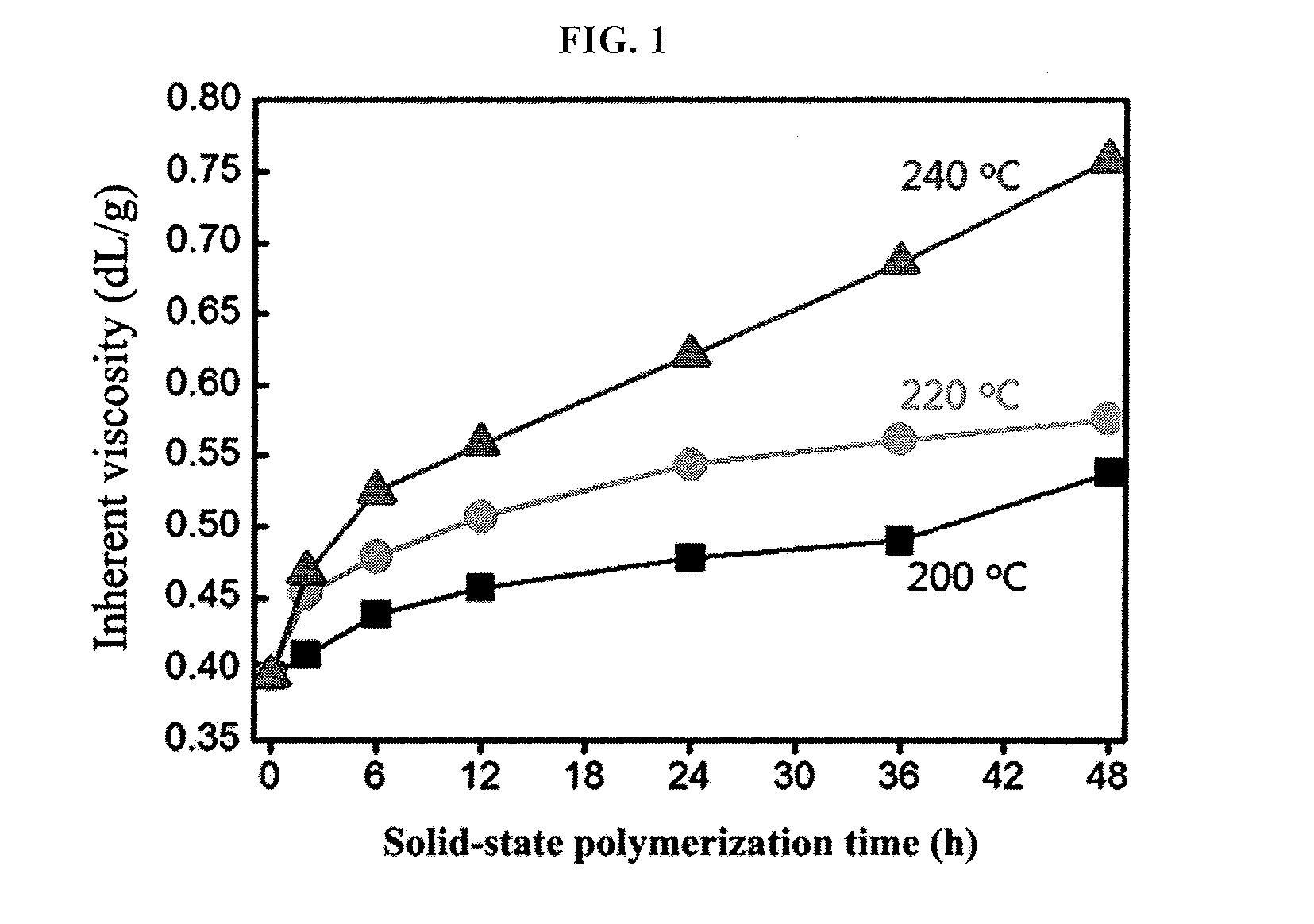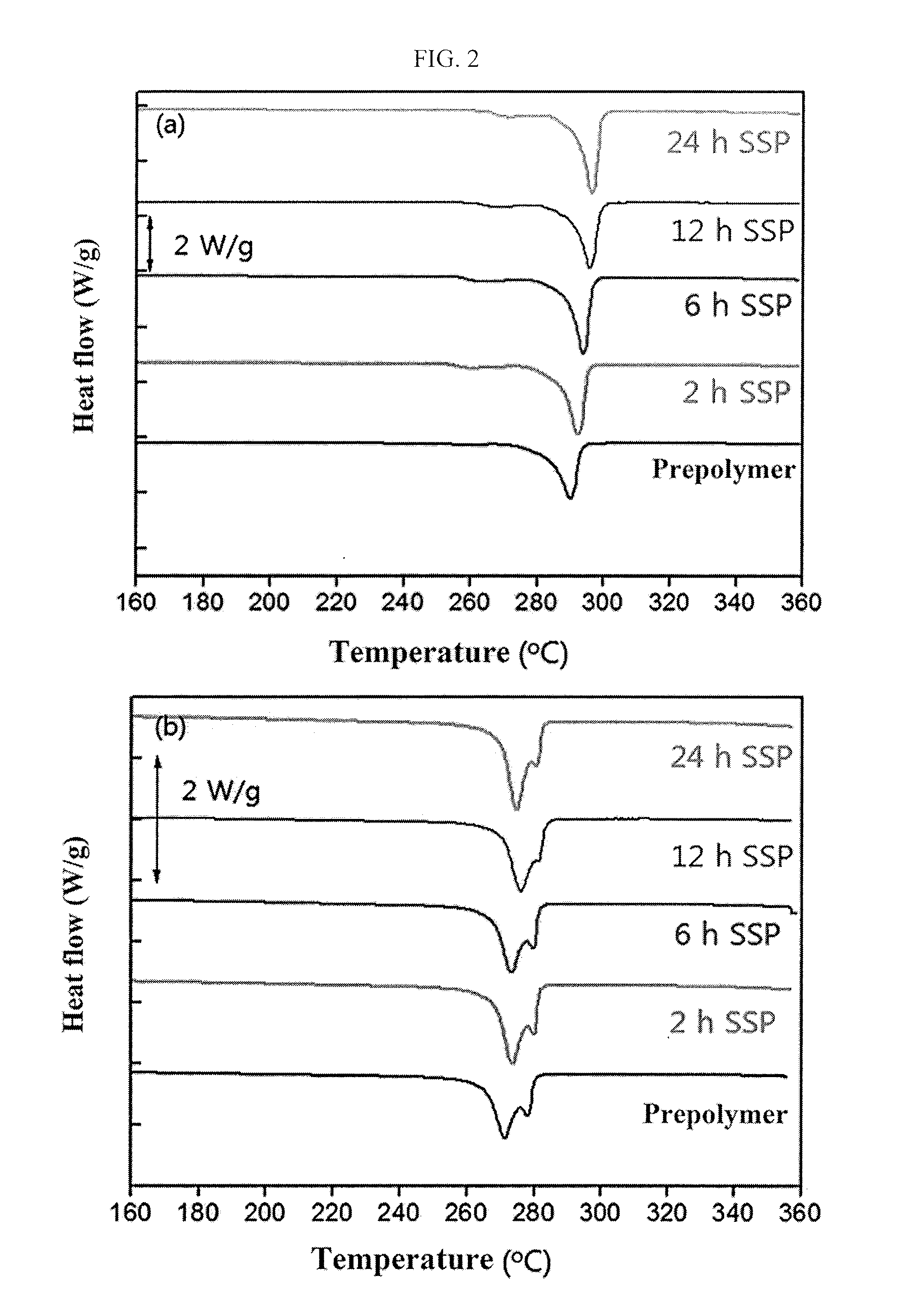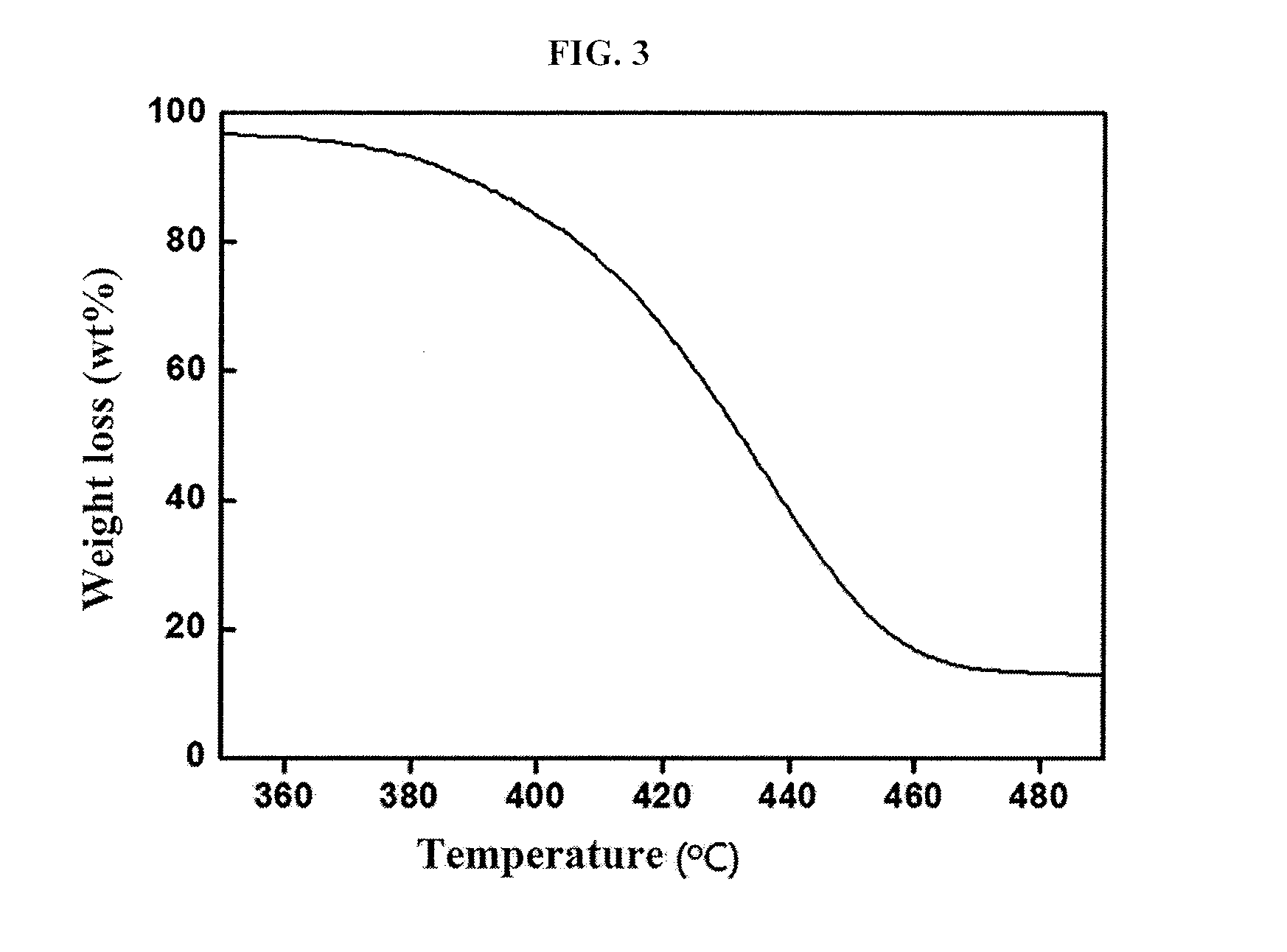Method for preparing furanic copolyamide derived from biomass using solid-state polymerization
a technology of solid-state polymerization and furanic copolyamide, which is applied in the field of preparing furanic copolyamide derived from biomass using solid-state polymerization, can solve the problems of high production cost, disadvantage in economic efficiency, and high performance requirements, and achieve good thermal stability and increase the molecular weight of the prepolymer
- Summary
- Abstract
- Description
- Claims
- Application Information
AI Technical Summary
Benefits of technology
Problems solved by technology
Method used
Image
Examples
example 1
Preparation of Semi-Furanic Copolyamide-1
[0057]
[0058]Step 1: Preparation of Semi-Furanic Copolyamide Prepolymer
[0059]In this step, copolyamide 4,F / 4,6 including polyamide 4,F and polyamide 4,6 in a molar ratio of 1:9 was prepared. First, 33 g of polyamide 4,F prepared in Preparative Example 1, 277 g of the polyamide 4,6 salt prepared in Preparative Example 2, and 31 g of water were fed into a 1.2 L stirred autoclave made of stainless steel (Grade 316) and stirred in a nitrogen atmosphere with increasing reaction temperature from 25° C. to 170° C. over 1 hr. Subsequently, the reaction temperature was increased from 170° C. to 220° C. over 4 hr and from 220° C. to 270° C. over 3 hr to prepare a prepolymer.
[0060]Step 2: Preparation of Semi-Furanic Copolyamide
[0061]The prepolymer prepared in step 1 was pulverized into a powder having a size of 250-500 μm. The prepolymer powder was fed into a tubular solid-state polymerization reactor made of stainless steel (Grade 316). Thereafter, the ...
example 2
Preparation of Semi-Furanic Copolyamide-2
[0062]The title copolyamide was obtained in the same manner as in Example 1, except that the internal reaction temperature of the solid-state polymerization reactor in step 2 was raised to 220° C. instead of 200° C.
example 3
Preparation of Semi-Furanic Copolyamide-3
[0063]The title copolyamide was obtained in the same manner as in Example 1, except that the internal reaction temperature of the solid-state polymerization reactor in step 2 was raised to 240° C. instead of 200° C.
PUM
| Property | Measurement | Unit |
|---|---|---|
| temperature | aaaaa | aaaaa |
| temperature | aaaaa | aaaaa |
| melting temperatures | aaaaa | aaaaa |
Abstract
Description
Claims
Application Information
 Login to View More
Login to View More - R&D
- Intellectual Property
- Life Sciences
- Materials
- Tech Scout
- Unparalleled Data Quality
- Higher Quality Content
- 60% Fewer Hallucinations
Browse by: Latest US Patents, China's latest patents, Technical Efficacy Thesaurus, Application Domain, Technology Topic, Popular Technical Reports.
© 2025 PatSnap. All rights reserved.Legal|Privacy policy|Modern Slavery Act Transparency Statement|Sitemap|About US| Contact US: help@patsnap.com



